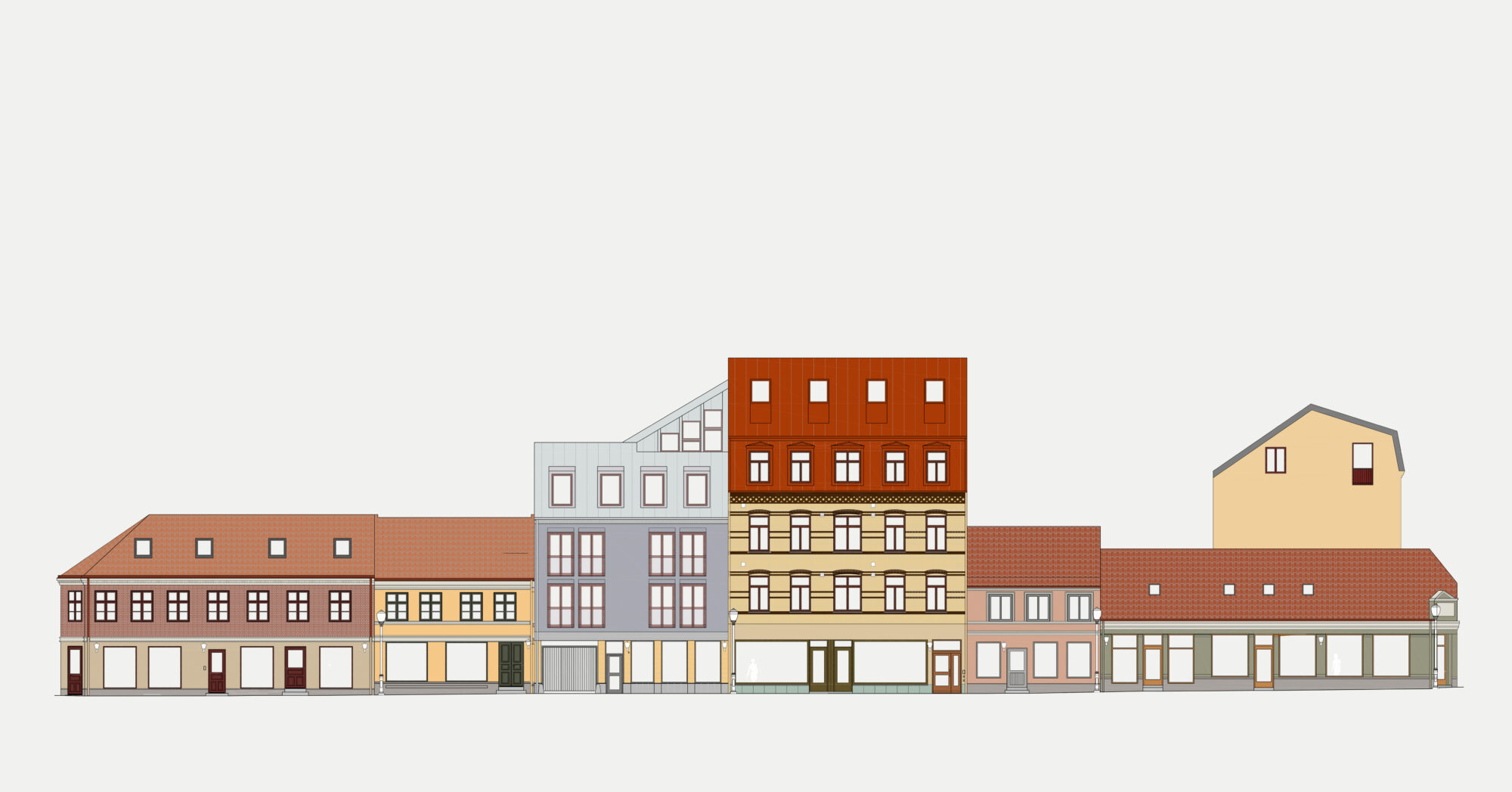2024-01-31
FOJAB restores an entire block in central Helsingborg
Interest in building new buildings in the 'old style' is growing among politicians and decision-makers. Perhaps it is time to broaden the perspective and see what can be done to actually preserve the older buildings that already exist? In Helsingborg, the Mariatorget housing association is working with FOJAB to restore an entire block dating back to the late 18th century.
The block, which faces one of Helsingborg's central pedestrian streets, shows traces of five of the city's history: The city structure dates back to the Middle Ages. A half-timbered barn from the late 18th century represents the old craftsman's town. There are plastered two-storey houses from the early 19th century. Industrialization is manifested by several grand turn-of-the-century brick houses, and the 1980s by postmodern residential buildings.
- Older buildings are an important part of our collective memory. It gives us a link back in time and a strong sense of place. In a city like Helsingborg, where many older houses were demolished from the 1960s onwards, it is particularly important to preserve what actually remains," says Karl Johan Kember, an architect at FOJAB, responsible for the area of building conservation and an expert on cultural-historical buildings.
An economic benefit
A project of this kind requires careful preparation and extensive expertise in the building techniques of the different eras. On the other hand, the benefits of renovation are significant, both in terms of cultural history and sustainability, challenging the common notion that building new is the most profitable option. The older building materials are chosen to last a long time. There are windows that have been in place for 120 years - compared to today's plastic windows, which have an estimated lifespan of around 40 years.
From an investment point of view, it is also good business to restore period buildings - older properties that have retained their character command high prices. Maintaining the period character of the buildings and the vibrant, colorful urban space they provide in the form of shops, cafes and restaurants on the street level also makes the city more attractive to residents and visitors alike.
Close cooperation
The restoration of Brf Mariatorget will begin in the spring. The project has been preceded by a close collaboration between the property owner, HSB, the city architect and the city antiquarian in the city of Helsingborg and FOJAB.
- This collaboration has ensured that the project has been well established in the city from the outset, and there is great interest among those who live and work in the buildings. The opportunity to work with an entire neighborhood - and in this case one of the city's most beloved pedestrian streets - is a real privilege. It becomes clear what we architects can actually offer in terms of preserving and developing existing buildings, and how we can highlight their values and qualities," says Karl Johan Kember.
Keep as much as possible
The project began with FOJAB producing a cultural environment document with advice and recommendations for the renovation. It describes everything from the history and development of the properties to their current technical status. The aim is to build on the specificity of the buildings in question and retain as much of the old material as possible. Windows and window sections will be renovated, tiled roofs will be rebuilt, balcony tiles and natural stone plinths will be repaired and supplemented, and all wrought ironwork will be reviewed. Characteristic features that have deteriorated over the years, such as front doors, roof drainage and sheet metal work, will be replaced with high quality, contemporary solutions.
Contemporary color palette
When restoring older buildings, the aim is usually to restore the original colors, but in Brf Mariatorget all the original plaster had been demolished and the paint scraping only provided knowledge of the color scheme of the last decades.
- The houses will be replastered with lime mortar and since we have the privilege of working with the entire street section, we have been able to choose colors that both suit the individual houses and work well together. The color variation will be preserved, but instead of today's strong facade colors, we will work with lighter tones in pink, yellow and gray-green, among others. The joinery, on the other hand, will be painted in strong colors: iron oxide red, chrome oxide green and ochre yellow," says Karl Johan Kember.
